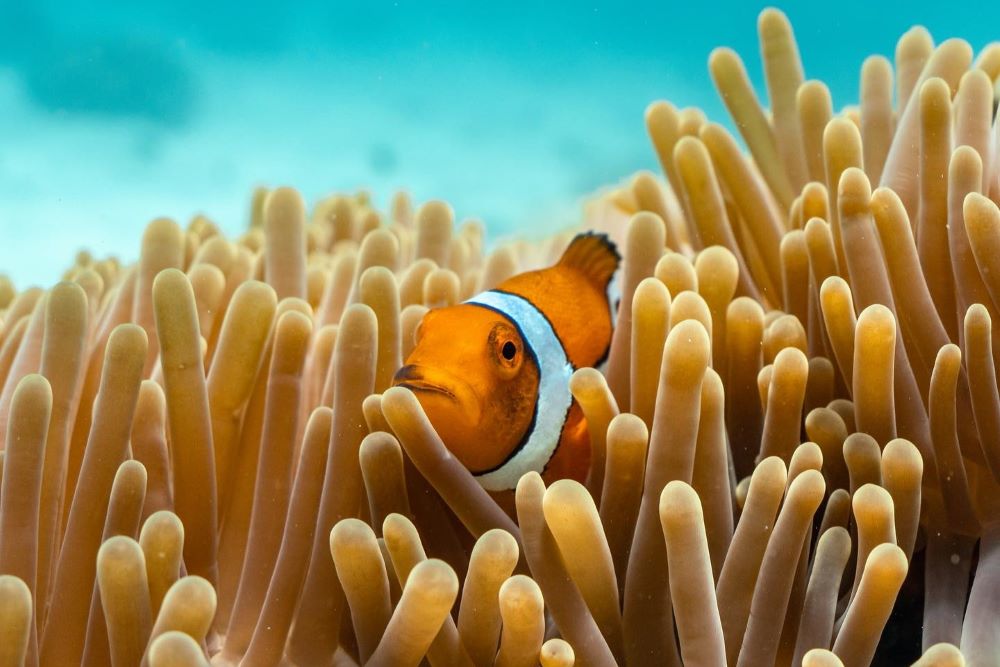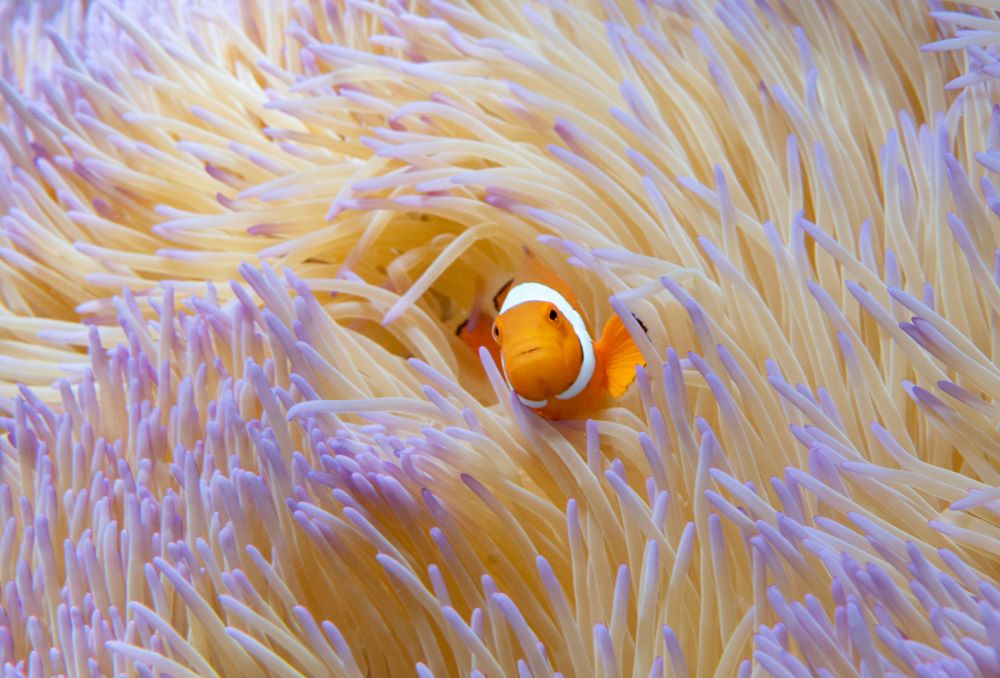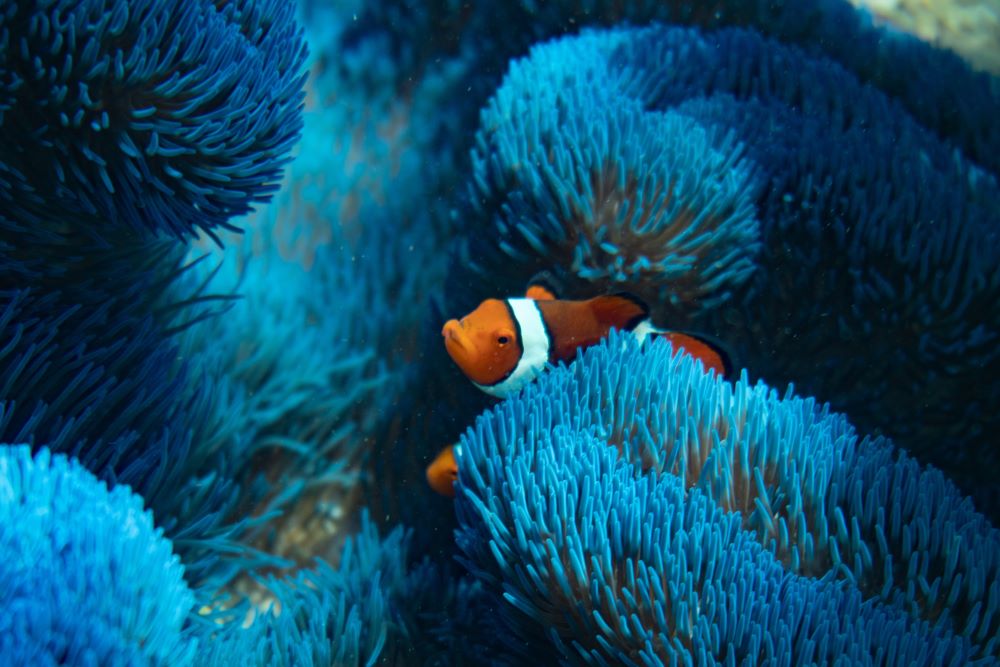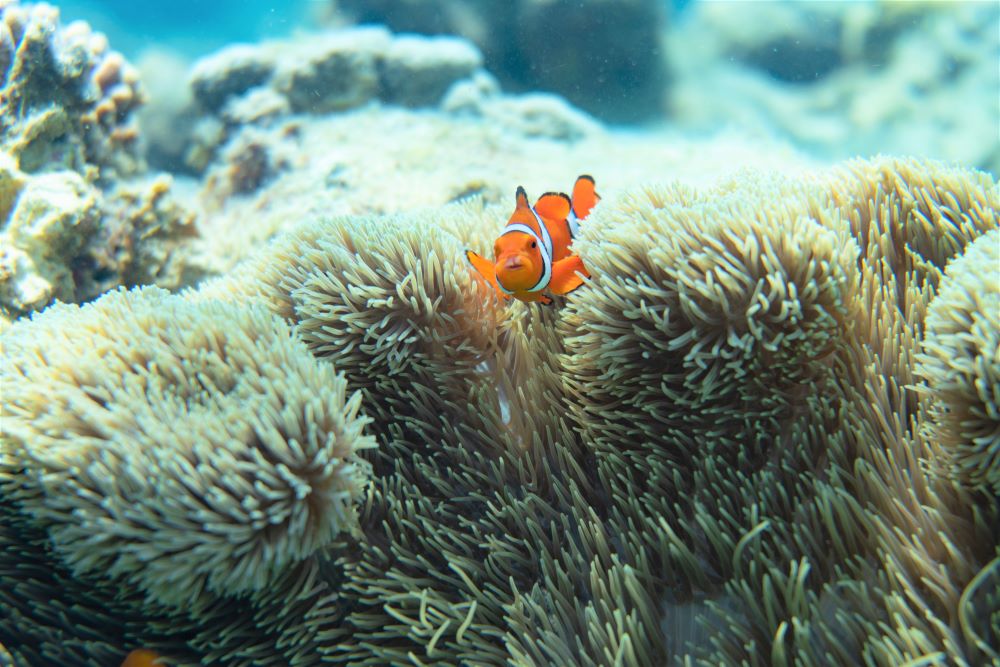The animated film “Finding Nemo” brought clownfish into popular culture. The character Nemo, a clownfish, and friend Dory embark on a journey through the ocean. The movie has made spotting a clown fish or ‘Nemo’ as high on a snorkellers wish list as swimming with a sea turtle.
Here are a few fun facts about these feisty, colourful fish and we’ll l also let you know some of the best places to see them.
Disclosure: Please Note That Some Links In This Post May Be Affiliate Links, And At No Additional Cost To You, We Earn A Small Commission If You Make A Purchase. Commissions Go Toward Maintaining The Snorkel Spots Website.

Fun Facts about Clown Fish
Tiny But Tough
Clownfish, also known as anemonefish, are relatively small, with the largest species, the saddleback clownfish, reaching only about 6 inches (15 cm) in length. Despite their size, they are known for their resilience and ability to defend themselves.
Specialized Homes
Clownfish are closely associated with sea anemones, forming a symbiotic relationship. They seek refuge among the tentacles of sea anemones, which offer protection from predators. In return, the clownfish provide the anemones with nutrients and protection.
Immunity to Anemone Stings
Clownfish have a mucus layer on their skin that protects them from the stinging cells (nematocysts) of sea anemones. This adaptation allows them to coexist peacefully within the anemone’s tentacles.
Not just any Anemone
There are more than 1000 anemone species but only around 10 are favoured by clownfish. One species – the Magnificent sea Anemone – is most commonly chosen by clown fish.

Many Colours
There are around 30 species of clown fish with the striped orange and white variety the best known. But clown fish can also be yellow, red and black and come in a variety of patterns.
Egg-Tending Fathers
Unlike many fish species, male clownfish are actively involved in parenting. After the female lays eggs on a flat surface close to the anemone, the male guards and cares for them until they hatch.
Colour-Changing Abilities
Clownfish can change their colour, a trait they use for communication and to reflect their mood. The colour changes can range from dark to light, and different patterns convey various messages to other clownfish.
Social Hierarchy
Clownfish live in social groups consisting of a breeding pair and a few smaller, non-breeding individuals. The breeding pair includes a dominant female, the largest fish, and a smaller male.

Gender-Changing Ability
Colour isn’t the only thing clown fish can change. If the dominant female dies, the smaller male can transform to be a female and the new dominant fish on the anemone
Vocal Communicators
Clownfish also use a series of chirps and pops to communicate with each other. These sounds are produced by grinding their teeth, and they play a crucial role in establishing territory and courtship rituals.
What do Clown Fish Eat?
Clownfish are omnivores, meaning they eat both plant and animal matter. Their diet includes small crustaceans, plankton, and algae.
Where do you find Clown Fish?
While commonly associated with tropical coral reefs in the Indo-Pacific region, clownfish can be found in other parts of the world. Some species inhabit the Red Sea, the Great Barrier Reef, and the Indian Ocean.

Where can you see Clown Fish?
The Great Barrier Reef is the perfect location to spot your first clown fish. Because clown fish live in shallow lagoons and walls of coral, they can be easy to spot for snorkellers of all ability.
The trick to finding a clown fish is knowing where the sea anemone species that clown fish call home can be found. The best way of doing this is with a guide on a snorkelling tour.
From Cairns you can see clown fish on tours to Green Island, Fitzroy Island, Franklin Island and the outer reef.
Further south, you can also find clown fish on the reef around The Whitsundays, Lady Elliot, Lady Musgrave, Magnetic and Heron Island.
- Fun Facts about Sharks - February 15, 2024
- Where can you Safely Swim with Sharks in Australia? - February 15, 2024
- How to Snorkel – 15 Tips for Beginners - February 15, 2024


